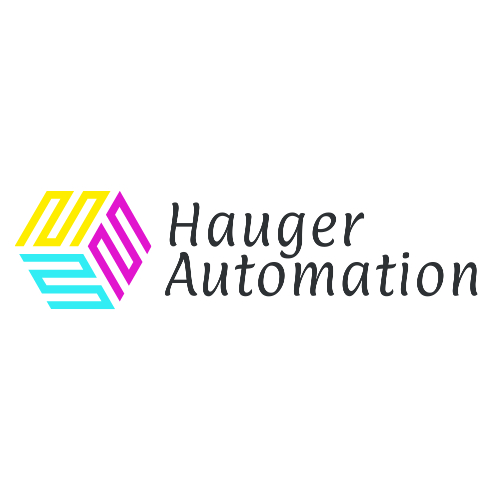Being mobile and saving resources – How do we imagine the mobility paradise? In conversation with Valentin Jahn, futurologist, founder and entrepreneur of MDL Mobilitäts Data Lab GmbH from Berlin.
Science fiction movies, such as „Back to the Future,“ tell of flying cars that will glide through the skies, space and time in the future almost as if by themselves and grace our horizon. Futurologists and designers agree that new concepts of locomotion are unstoppable: Drones, networking, virtual travel, autonomous driving and many more are up for discussion. The famous „DeLorean“ from „Back to the Future“ stands in the think tank of the old, revered Ullstein building at Berlin’s Tempelhofer Hafen, as a sign of visions and departure for the mobility turnaround, visionary and founder Valentin Jahn reveals to us. The film trilogy from 1985, 1989 and 1990 took numerous generations into a new age that today serves as the basis for visions of founders and inventors. Although flying cars are more fiction than reality, innovations in vehicle technology are nevertheless on the horizon that will make driving easier for us humans or even take it away altogether, smiles Valentin Jahn. „Everyone who visits us in the think tank „The Divery GmbH“ stops with wide eyes and tells at least one story about the DeLorean.“ Not only since the legendary time travels of Marty McFly and Doc Brown is mobility in exciting change and topics such as sustainability, climate protection, resource conservation complement today the conversion of the mobility turn. „Our product CAR2AD from Mobility Data Lab GmbH specializes in intelligent target group targeting. Our focus is not to promote the private car, but actually car-sharing vehicles, thus contributing to sustainable mobility,“ explains futurologist Jahn.
The dream of automation
Self-driving cars for greater safety through sensors, camera, radar and lidar systems. Humans are responsible for 90 percent of all accidents. The dream of self-driving cars is divided into five levels of automation. These levels specify which driving tasks are the responsibility of the driver and which can be taken over by the vehicle itself.
Level 0 is listed as the lowest level, which does not represent any type of automation in the vehicle. Level 1 includes simple driver assistance systems that support the driver in driving tasks. Examples of driver assistance systems that belong to level 1 are the parking assistant that beeps when there is an obstacle nearby and cruise control. At level 2, partial automation, various assistance systems are combined and it is possible for the vehicle to take over both longitudinal and lateral guidance for a short time. This level is reached, but the important thing here is that at levels 1 and 2, the driver must constantly monitor the traffic and not turn away.
From level 3, the so-called conditional automation, it is possible for the driver to turn away from his task while driving and read the newspaper, for example. The vehicle can drive itself in certain environments, such as the highway. It can accelerate, brake and overtake by itself. It monitors its own limits and recognizes when it is no longer able to drive the vehicle safely. In such a case, it prompts the driver to take back control within a certain period of time. Cars in the fourth stage are highly automated vehicles. These can drive completely autonomously within a specific environment, so that a driver is no longer needed for this time. In the event that this specific area is left, a driver can take over the wheel again. Compared to stage 3, stage 4 also includes driving onto the highway and merging into the flow of traffic. The last stage is the fully automated vehicle. Here, the vehicle occupant is only a passenger and no longer performs any driving tasks.
Valentin Jahn comments: „Autonomous vehicles communicate with each other via the Internet of Things in order to calculate the optimal speed for fluid traffic, for example – connected driving, so to speak. Networking is also found in CAR2AD. Let’s imagine, for example, a live map showing where a suburban train, a subway or a bus is running right now. With the background that people who are perhaps just getting into a car also see: Hey, there’s a subway station here, I hadn’t noticed that yet. These so-called „intermodal traffic information“ systems, which can already provide fluid mobility today, are interesting. The development remains exciting and the transformation of mobility is steadily progressing from Level 2 to Level 5, as the latest models on the mobility market show us.“

Back to the future
Today’s automobiles have systems that relieve the driver of individual driving tasks, making the journey easier while ensuring greater safety. These systems are becoming more and more advanced to realize more and more automated functions in a vehicle. Safety and efficiency are just as crucial as the transformation to sustainable mobility. „Mobility always starts in the mind, it is the perception of the possibilities, which consist of numerous options. This can be compared to the development of the smartphone. The next big change we have in mind is probably electromobility with other hurdles. But it’s also a „back to the future,“ because in the early 20th century, we had a lot more electric cars than we do today. That means it’s not just necessarily a technological leap, but also a mental leap,“ says Valentin Jahn.
One approach Mobility Data Lab GmbH is taking is to close the financial gap for parking time for car-sharing vehicles. The initial situation is that cities need money for parking fees and at the same time there is a willingness to support car sharing. This creates conflicts that the CAR2AD product could transform into a mutually beneficial solution. The CAR2AD approach helps cities earn their fees and collect data and information. Specifically, it would gain baseline information on actual user needs and address issues such as parking space, spare capacity, car sharing usage, opportunities for changes in the use of urban spaces.
V.i.S.d.P.:
Amelie Hauger
Blogger
About the author:
Amelie Hauger is a mechanical engineer from southern Germany who has been accompanied by an ever-growing enthusiasm for technology since childhood. The link between theory and practice in the dual study program prepared her for the start of her professional career in the automotive industry. Her special interest lies in future technologies, alternative vehicle drives and autonomous driving.
Contact:
MDL Mobility Data Lab GmbH
c/o The Drivery GmbH
Mariendorfer Damm 1
12099 Berlin
represented by Valentin Jahn
phone: +49 (0) 30 120 86 7 85
e-mail: info@car2ad.de
web: https://mobilitydatalab.com
About the company:
MDL Mobility Data Lab GmbH is located in Berlin (Tempelhofer Hafen) and specializes in intelligent audience targeting. MDL connects ads, data, people and stores with a patented and cloud-based solution platform that uses Web IDs to connect advertising recipients online and offline. Products include CAR2AD, an automated and dynamic signage solution, and STORE2AD as a link between online marketing and offline sales. For more information, visit: https://mobilitydatalab.com
Press contact:
MDL Mobility Data Lab GmbH
Valentin Jahn
Mariendorfer dam 1
12099 Berlin
Telefon: +49 (0) 30 120 86 7 85
E-Mail: info@car2ad.de
web: https://mobilitydatalab.com





